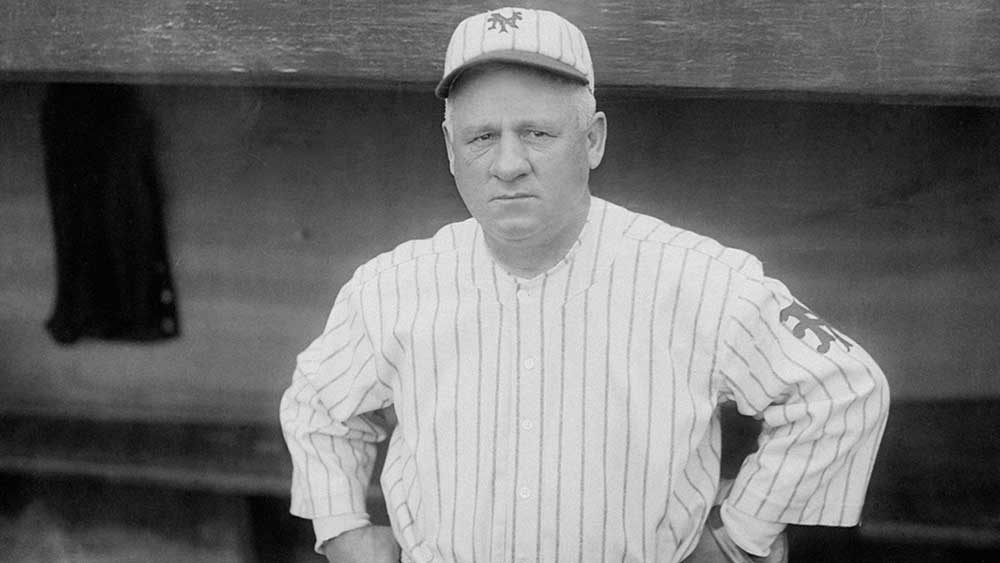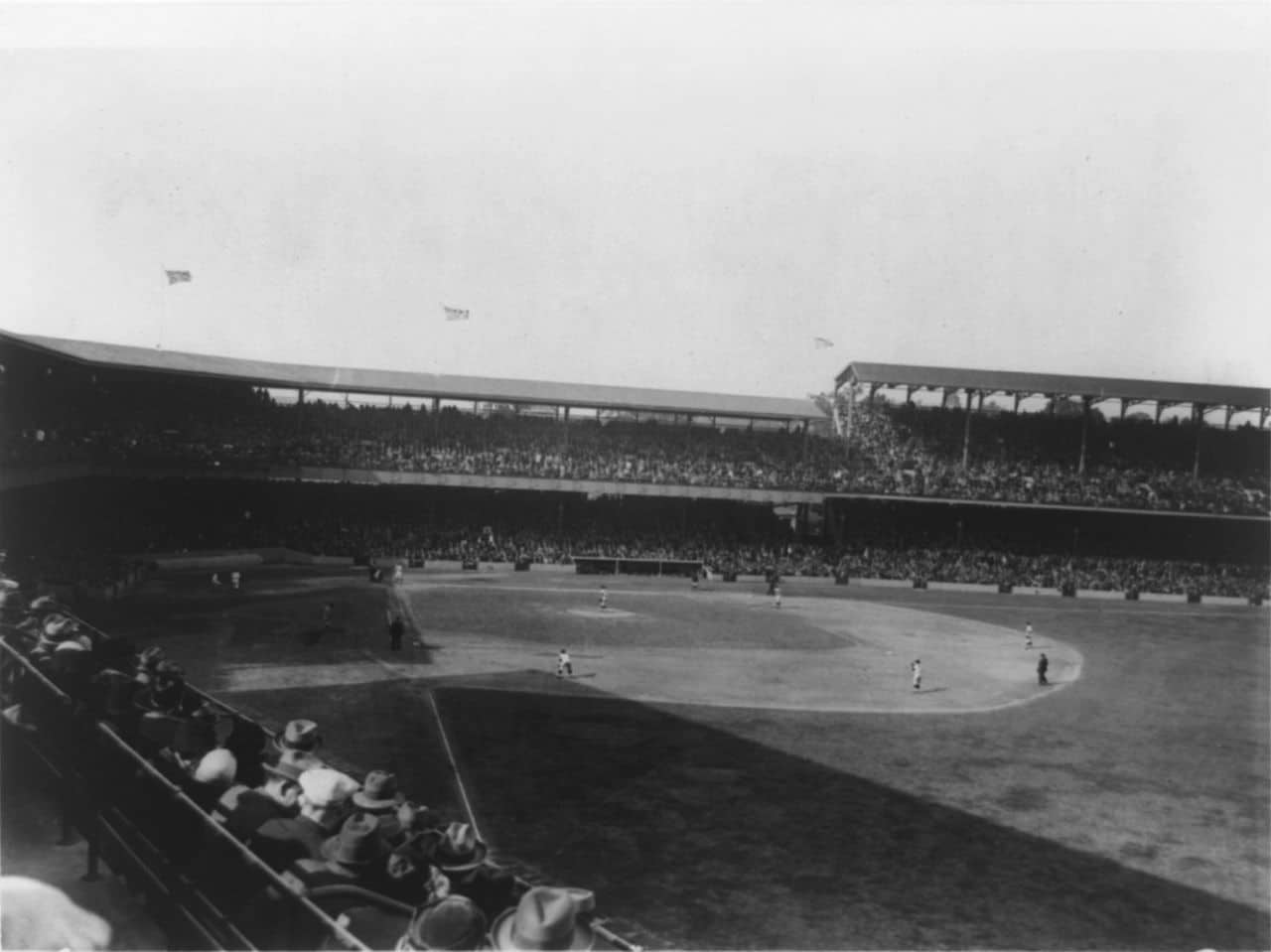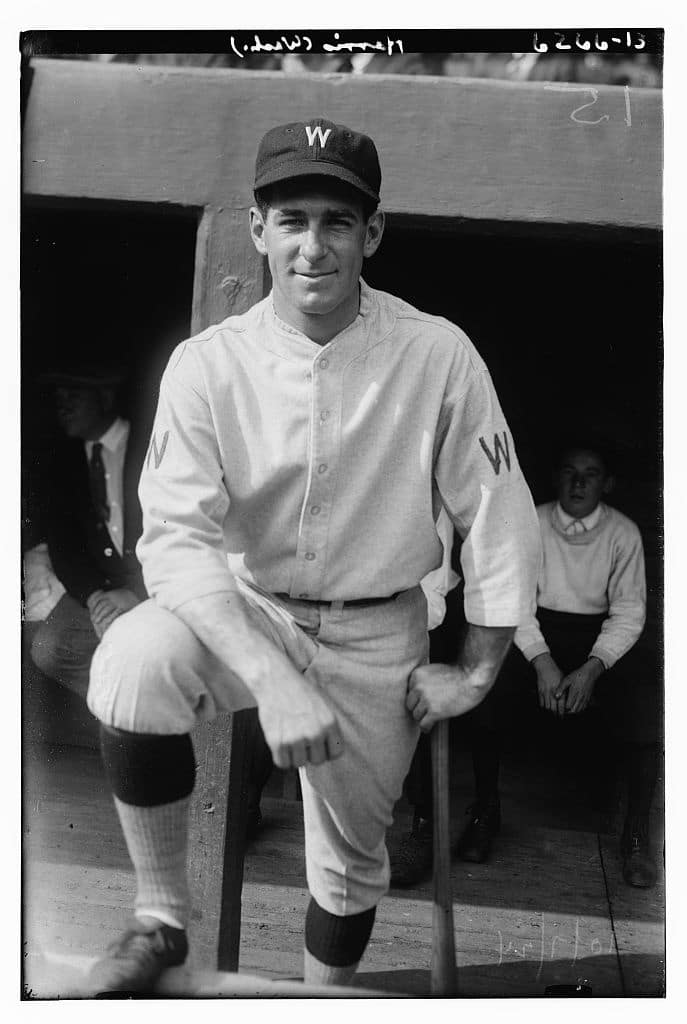
Jump to:
- #1. It is the Only World Series Appearance For Walter Johnson
- #2. It Was The First And Only World Series Win In Washington Senators' History
- #3. The 1923 World Series Was The Last World Series Appearance For John McGraw
- #4. The Series Had An Exciting Finish
- #5. A New Format Was Put In Place
- #6. Attendance Dropped For The First Time In Two Years
- #7. Bucky Harris Became Boy Wonder
#1. It is the Only World Series Appearance For Walter Johnson
The 1924 World Series was the first and only appearance for Walter Johnson, who is regarded as one of the greatest pitchers in baseball history.
Johnson was 36 years old and past his prime at the time, but had won over 20 games during the season to help the Senators reach the World Series.
During the series, he would lose his two starts but redeemed himself in Game 7 when he came out to pitch relief and held the Giants scoreless.

#2. It Was The First And Only World Series Win In Washington Senators' History
The Washington Senators was never viewed as a strong franchise. They had struggled for years, and their only claim to fame was the outstanding pitching from Walter Johnson.
After a subpar 1923 season, the Senators rebounded and found themselves in the World Series for the first time.
They would win the series, and the club would never again win another World Series until they moved and became the Minnesota Twins.
They would appear in 2 more World Series matchups but would go home the loser of the series.
#3. The 1923 World Series Was The Last World Series Appearance For John McGraw

John McGraw dominated the National League for two decades as the manager for the New York Giants. His brand of baseball brought the teams he managed much success.
His first World Series should have been in 1904, but the Giants boycotted the game. In 1905, his Giants would defeat the Philadelphia Athletics due to amazing pitching from Christy Mathewson.
His teams remained competitive but did not return to the World Series until 1911. His teams did not win but made appearances in 1912, 1913, and 1917. He had four appearances within the decade.
During the 1920s, he repeated that feat, but this time doing it consecutively. The Giants went to the World Series in 1921, 1922, 1923, and of course, 1924.
In total, he won 10 National League pennants and 3 World Series Championships. He had success during the Deadball Era and after Babe Ruth changed the game.
#4. The Series Had An Exciting Finish
In Game 7, with the Senators behind 3–1 in the eighth, Bucky Harris hit a routine ground ball to third, which hit a pebble, and took a bad hop over Giants third baseman Freddie Lindstrom.
Two runners scored on the play, tying the score at three. Walter Johnson then came in to pitch the ninth and held the Giants scoreless into extra innings.
With the score still 3–3, Washington came up in the 12th. With one out and runners on first and second, Earl McNeely hit another grounder at Lindstrom, and again, the ball took a bad hop, scoring Muddy Ruel with the Series-winning run.
#5. A New Format Was Put In Place
The best of seven series was given the format of 2 - 3 - 2 for the first time in World Series history. This would be the format used moving forward in every World Series.
It would give the team with the best record the advantage of home games. The first two games would be played at home, and then the visiting team would receive 3 games in a row.
If the visiting team would steal one of the first two games, then there was a lot of pressure on the home team to win 1 game on the road.
#6. Attendance Dropped For The First Time In Two Years

The prior year had set a record in attendance. This was due to the popularity of Babe Ruth and the Yankees.
Another reason was the opening of Yankee Stadium, which was a larger stadium than most older stadiums, and the renovation of the Polo Grounds that allowed more fans to attend the games.
Washington played their games at Griffith Stadium, which had about half of the capacity of Yankee Stadium.
#7. Bucky Harris Became Boy Wonder

Ironically, the rookie manager Bucky Harris beat the grizzled veteran John McGraw in 1924.
Harris spent most of his playing career as a second baseman with the Senators (1919–1928). In 1924, he was named player-manager; at the age of 27, he was the youngest manager in the Majors.
He proceeded to lead the Senators to their only World Series title in Washington in his rookie season and was nicknamed "The Boy Wonder.
He not only managed well but hit for a .333 average and had two home runs.
